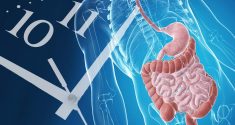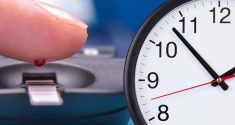Scientists at Duke-NUS Medical School and the University of California, Santa Cruz, have discovered the secret of how our internal clock is regulated. They found that this regulator sits right at the back end of casein kinase 1 delta (CK1δ), a protein that acts as a pacemaker for our internal biological clock or the natural 24-hour cycles that control sleep-wake patterns and other daily functions known as the circadian rhythm. The results of the study, published in the journal PNAS, may pave the way for new approaches to treating disorders related to our internal clock.
Current Research
CK1δ regulates circadian rhythms by tagging other proteins involved in our biological clock to optimize the timing of these rhythms. In addition to modifying other proteins, CK1δ itself can be tagged, altering its own ability to regulate the proteins involved in controlling the body’s internal clock. Previous research identified two different versions of CK1δ, known as the δ1 and δ2 isoforms, which differ by only 16 building blocks, or amino acids, right at the end of the protein in a part called the C-terminal tail. However, these small differences have significant effects on the function of CK1δ.

New Ways for Treating Circadian Rhythm Disorders And a Range of Diseases
Professor David Virshup, Director of the Cancer and Stem Cell Biology Program at Duke-NUS and co-author of the study, first studied this protein more than 30 years ago when he was investigating its role in cell division. With the technology now available, scientists were finally able to get to the bottom of a question that had remained unanswered for more than 25 years. Researchers have found that the δ1 tail interacts more strongly with the main body of the protein, leading to stronger auto-inhibition compared to δ2. This means that δ1 is more highly regulated by its tail than δ2. When these sites are mutated or removed, δ1 becomes more active, leading to changes in circadian rhythms. In contrast, δ2 does not have the same regulatory effect through its tail region.
This discovery shows how a small portion of CK1δ can greatly affect its overall activity. This self-regulation is essential to keeping CK1δ activity in balance, which in turn helps to regulate circadian rhythms. The study also looked at the broader implications of these findings. CK1δ plays a role in several important processes beyond circadian rhythms, including cell division, cancer development and certain neurodegenerative diseases. By better understanding the regulation of CK1δ activity, scientists may open up new avenues for treating not only circadian rhythm disorders but also a range of diseases.
Regulating our internal clocks goes beyond curing jet lag—it is about improving sleep quality, metabolism and overall health. This important discovery could potentially open new doors to treatments that could change the way we manage these essential aspects of our daily lives. The researchers plan to further investigate how real-world factors such as diet and environmental changes affect the marking sites on CK1δ. This could provide insights into how these factors affect the circadian rhythm and lead to practical solutions for dealing with disruptions.







